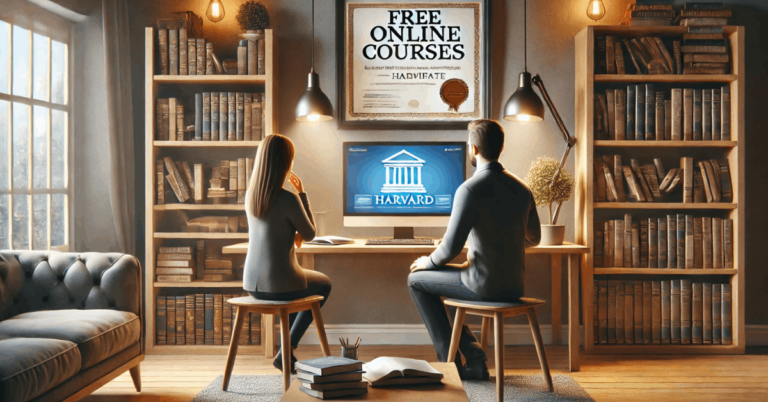Welcome to the world of ghost tour guiding, where history intertwines with the supernatural, and spine-tingling tales await in the moonlight.
As a ghost tour guide, you hold the keys to captivating your audience with stories of the spectral. This article will unlock the secrets to becoming a successful ghost tour guide.
Prepare to embark on a mysterious journey with secrets as enigmatic as the phantoms.
Understanding the Role
A ghost tour guide leads groups through haunted or historic locations, sharing engaging stories about ghosts and local history.
They aim to captivate their audience with tales of the supernatural, creating an immersive and memorable experience while ensuring guest safety and enjoyment.
The Importance of Historical Knowledge and Storytelling Skills
Historical knowledge and storytelling skills are the twin pillars that elevate a ghost tour guide from a mere narrator to a captivating purveyor of spine-tingling tales. Here are the key reasons why they are crucial:
- Authenticity: Deep historical understanding lends credibility to ghostly narratives captivating tour participants.
- Engagement: Skillful storytelling breathes life into the past, immersing guests in haunted history for an unforgettable experience.
- Connection: Historical knowledge links supernatural tales to actual events, fostering personal connections with ghostly legends.
- Suspense: Storytelling skills build tension, heighten the tour atmosphere, and captivate the audience.
- Memorability: Engaging storytelling and historical insights ensure vivid memories, garnering positive reviews and return visits.
- Educational Value: Historical knowledge enriches tours with educational content, deepening cultural and historical understanding.
- Adaptability: Skilled guides tailor each tour to the audience’s mood and preferences, ensuring a unique and engaging experience.
- Word of Mouth: Engaging, historically accurate stories generate positive word-of-mouth, boosting the ghost tour’s popularity and reach.
In essence, historical knowledge and storytelling skills are the secrets to transforming a ghost tour into a chilling and unforgettable journey through time and the supernatural.
Research and Preparation
Research and preparation are the foundation of a successful ghost tour, ensuring the guide possesses the knowledge and resources to deliver a spine-tingling experience. Here’s why they are paramount:
- Location Familiarity: Research ensures guides know the history and nuances of haunted sites for accurate storytelling.
- Story Curation: Preparation helps guides select the most compelling ghost stories for an immersive experience.
- Safety Measures: Research identifies potential hazards, ensuring participant safety.
- Historical Accuracy: Thorough research enhances the credibility of tour stories.
- Backup Content: Preparation includes having backup stories for unforeseen events.
- Customization: Research allows tailoring tours for different audiences.
- Resource Gathering: Preparation involves collecting props and equipment.
- Legal Compliance: Research helps guides comply with location regulations.
Thorough research and meticulous preparation are the cornerstones of a successful ghost tour, enabling guides to deliver captivating, safe, and authentic experiences to their eager guests.
Storytelling Techniques
Storytelling is the heartbeat of a compelling ghost tour, where guides transport their audience into the supernatural realm. Here are essential storytelling techniques that make this eerie journey unforgettable:
- Engaging Opening: Start with a captivating hook or anecdote to set the mood.
- Descriptive Language: Use vivid descriptions to picture haunted locations mentally.
- Character Development: Bring historical figures or ghostly entities to life with well-rounded portrayals.
- Suspense Building: Master pacing to create and maintain suspense throughout the tour.
- Emotional Connection: Connect listeners with the stories and characters personally.
- Interactive Elements: Incorporate questions, challenges, or role-playing to immerse participants.
- Varied Tone and Pace: Keep interest by varying your tone and pacing.
- Foreshadowing and Surprises: Drop hints and surprises to maintain engagement.
- Thematic Consistency: Ensure stories fit the overall atmosphere of the tour.
- Climactic Endings: Build stories to climactic endings for a lasting impression.
These storytelling techniques are the spectral threads that weave together a spine-chilling and immersive ghost tour experience, leaving participants thrilled and spellbound.
Interacting with Guests
Interacting with guests is a crucial aspect of being a successful ghost tour guide, as it ensures their enjoyment and enhances the overall experience. Here’s how effective guest interaction can elevate your ghost tours:
- Engagement and Connection: Interact with guests for an enjoyable, memorable experience.
- Addressing Questions: Be ready to provide insights into stories and locations.
- Personalization: Tailor interactions for inclusivity, adapting to group dynamics.
- Handling Skeptics: Manage skepticism with respect and an open mind.
- Eliciting Reactions: Encourage sharing to foster a sense of community.
- Providing Comfort: Attend to emotional needs, offering reassurance when needed.
- Professionalism: Maintain professionalism for respectful interactions.
- Encouraging Participation: Involve guests actively for enhanced interactivity.
- Feedback and Improvement: Seek feedback for continuous skill enhancement.
- Creating Memorable Experiences: Ensure lasting memories and positive reviews through effective guest interaction.
Marketing and Promotion
Marketing and promotion are vital in attracting curious souls to your ghost tours and expanding your spectral storytelling empire. Here are the key strategies to effectively market and promote your eerie adventures:
- Online Presence: Establish a website and active social media for tour information and engagement.
- SEO and Keywords: Optimize online content for better search engine visibility.
- Content Marketing: Create engaging blog posts, videos, or podcasts to showcase expertise.
- Email Marketing: Build an email list for direct communication and updates.
- Reviews and Testimonials: Encourage satisfied customers to leave reviews for credibility.
- Collaborations: Partner with local businesses for cross-promotion.
- Community Engagement: Attend local events to connect with residents and promote tours.
- Special Events: Host themed tours for seasonal interest and variety.
- Referral Programs: Incentivize past participants to refer friends and family.
- Advertising: Invest in online ads for a broader audience reach.
Effective marketing and promotion make your ghost tours a magnet for local and distant thrill-seekers. These strategies help you expand your reach and draw in those ready to explore the unknown.
Handling Challenges
Navigating the eerie world of ghost tours has its challenges. Successful guides must be prepared to tackle unexpected hurdles while delivering spine-tingling experiences. Here’s how to handle the challenges that may arise:
- Weather Uncertainties: Have alternative plans ready for adverse weather.
- Uncooperative Participants: Address disruptiveness with professionalism.
- Technical Failures: Prepare backup resources for technical issues.
- Safety Concerns: Prioritize participant safety by addressing hazards.
- Lack of Interest: Engage skeptics by adjusting storytelling.
- Historical Inaccuracy Challenges: Acknowledge inaccuracies and provide context.
- Unexpected Obstacles: Prepare for route disruptions with alternatives.
- Group Dynamics: Foster inclusivity and encourage participation.
- Guest Comfort: Address comfort concerns with empathy.
- Unforeseen Events: Adapt to unexpected disruptions during the tour.
Successfully navigating these challenges is essential for maintaining the integrity of your ghost tour and ensuring that participants have a memorable and enjoyable experience despite any unexpected circumstances.
Legal and Ethical Considerations
In ghost tours, navigating legal and ethical considerations is paramount for maintaining trust, respect, and professionalism. Here’s a rundown of the essential legal and ethical aspects to consider:
- Property Permissions: Obtain proper permissions for private property tours.
- Respect for the Deceased: Handle stories involving the deceased with sensitivity.
- Truthfulness: Present historical and supernatural content accurately.
- Safety Measures: Implement protocols for guests and guide safety.
- Cultural Sensitivity: Avoid culturally insensitive content.
- Environmental Impact: Minimize ecological impact responsibly.
- Code of Conduct: Establish and follow a guide and guest code of conduct.
- Privacy: Obtain consent for photography or recordings.
- Legal Compliance: Comply with relevant laws and regulations.
- Feedback and Accountability: Encourage feedback and maintain accountability.
By considering these legal and ethical factors, you can uphold the reputation of your ghost tours while offering a respectful and responsible experience to all participants.
The Bottomline
In ghost tour guiding, success hinges on historical knowledge, storytelling skills, and guest interaction. Master these elements to captivate your audience, leaving them unforgettable memories and wonder.
As you embark on this eerie journey, remember the secrets lie not just in the stories but in how you engage respect, and navigate the supernatural world, ensuring each tour is an exceptional experience for all who dare to explore it.













